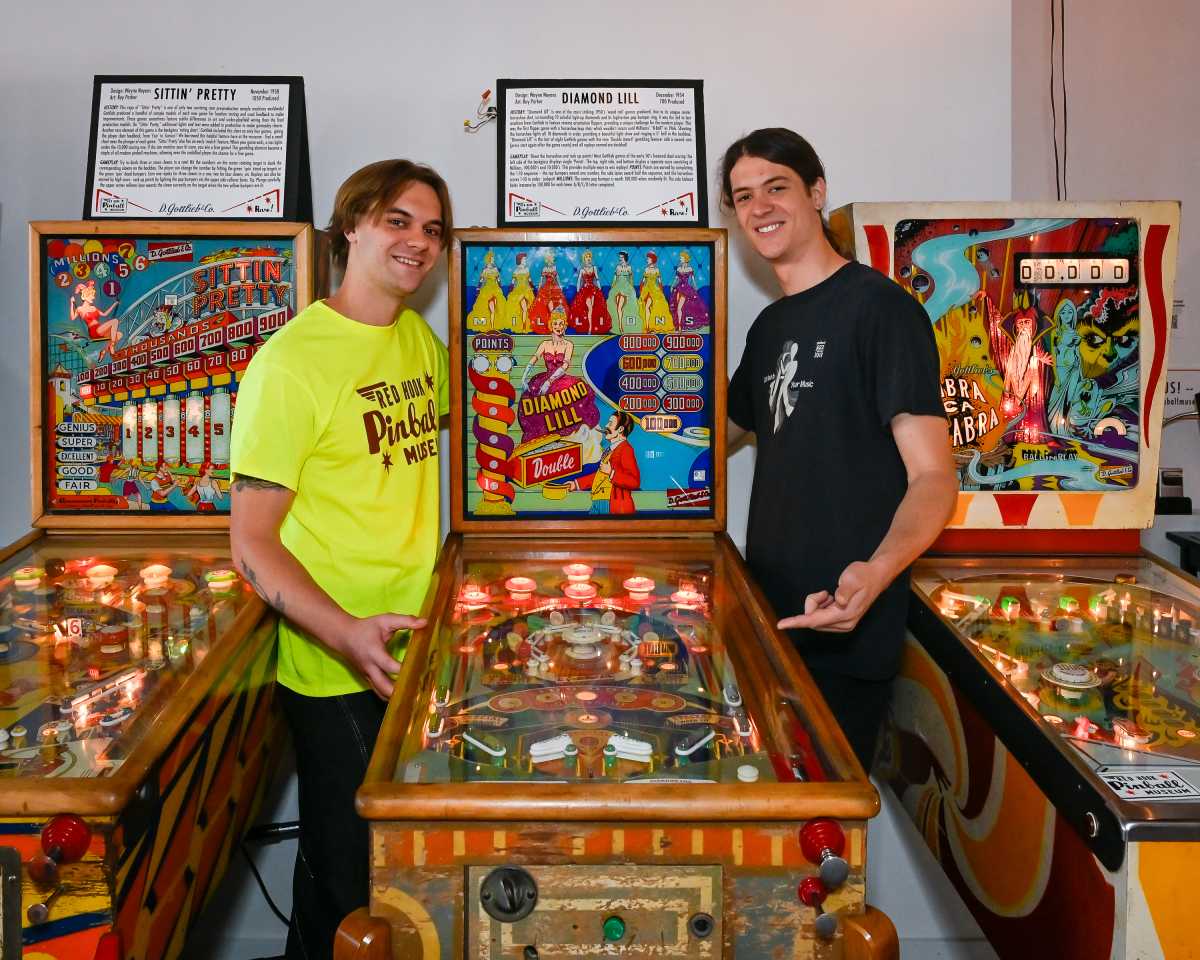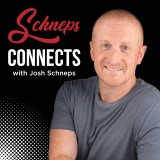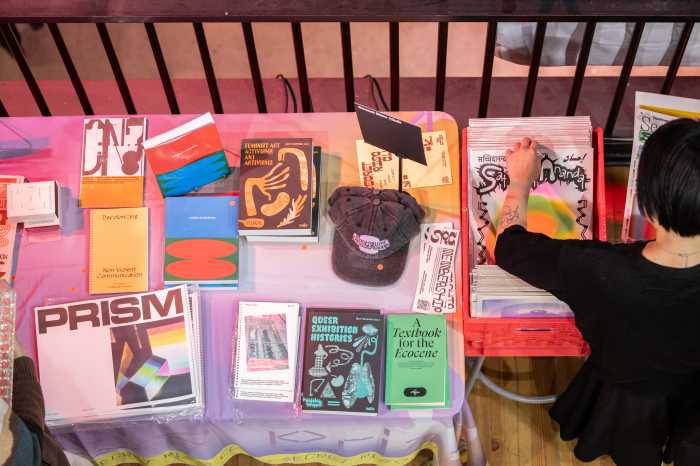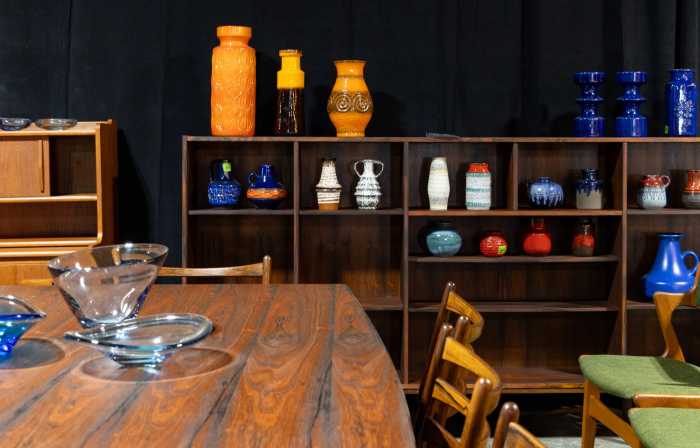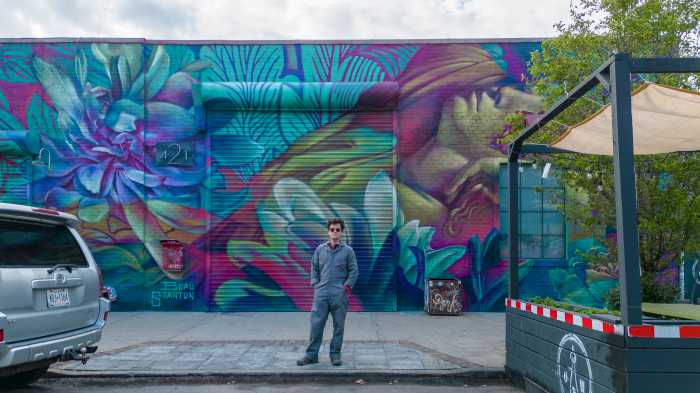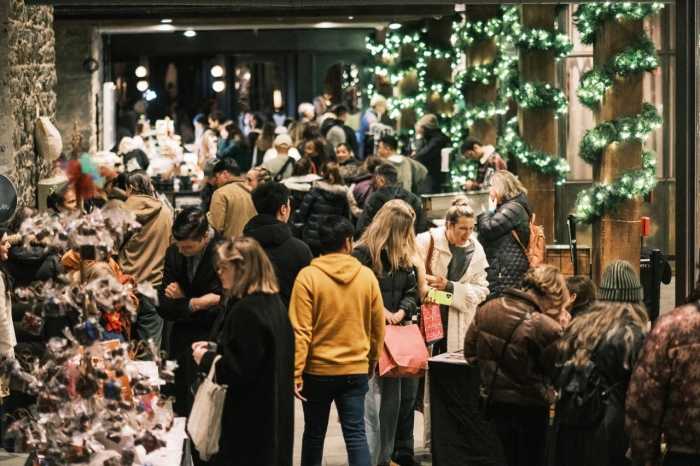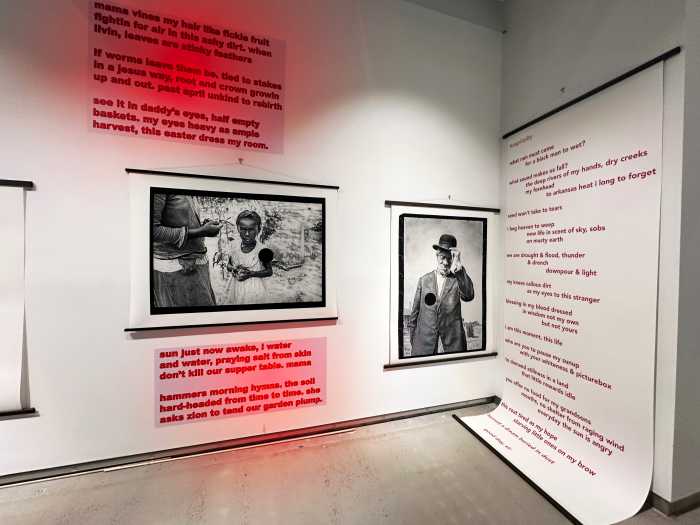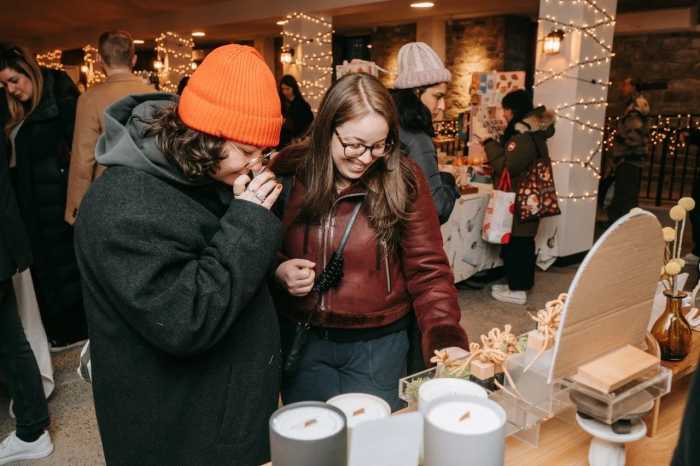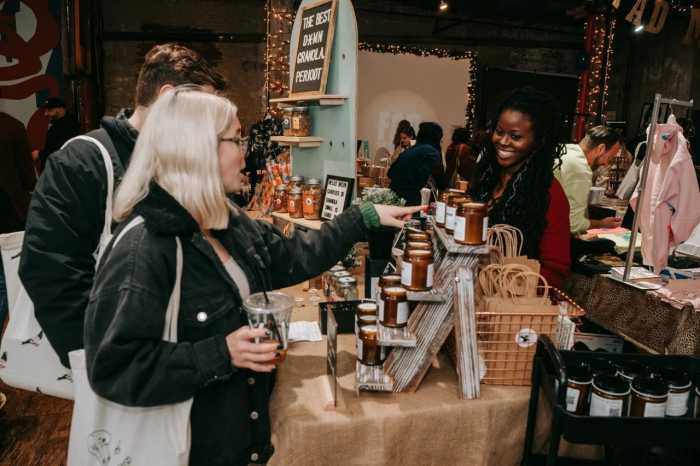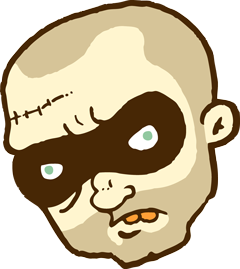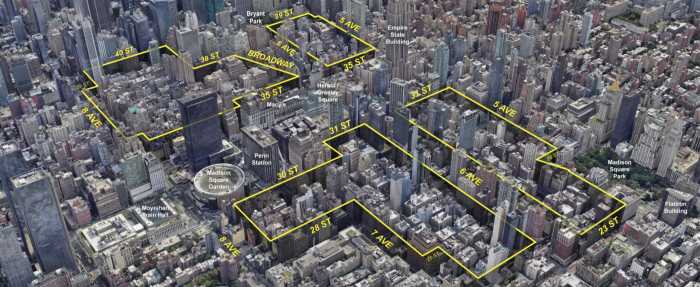The Red Hook Pinball Museum is really a museum to two things: pinball, and the friendship of its co-founders, Kevin Murray and Wesley Michalski.
Tucked into an unassuming storefront on Van Brunt Street, the museum is small and cozy, covered in vintage decor and Edison-bulb string lights. Lined up along the wall are seven electromechanical pinball machines, all at least 50 years old and each painstakingly sourced, restored and maintained by Murray and Michalski.
Where other museums only want visitors to look at their exhibits, play is the point at the Red Hook Pinball Museum. Every game is fully operational and set to free play, no coins required.
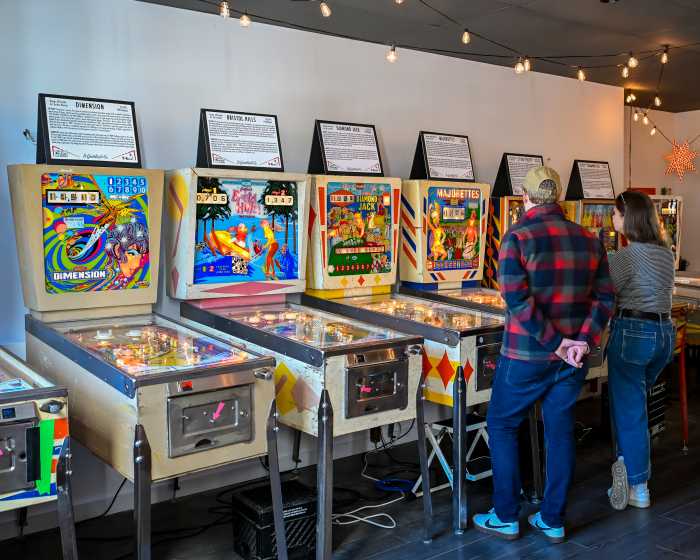
A plaque above each one details its story and its place in the surprisingly long and complex history of pinball. “Diamond Jack” from 1967 was one of the earliest pinball machines to feature an automatic ball lift; “Bristol Hills” was produced specifically for a distributor in New York and was designed to work around the state’s restrictive gambling laws.
“When we originally opened we weren’t sure if we were going to do the museum part or not,” Michalski said. “But it was just kind of like, we know all this information already, and we just kind of nerd out on it and are really into all that stuff. So we were like, well, I think people would probably appreciate it.”
Though the museum came together quickly — it launched with just a few games in the back of a local bar in February, returned with a pop-up over the summer, and landed on Van Brunt Street on Oct. 12 — it’s the product of years of work and play.
Growing up in California, Murray had a family friend with two pinball machines in their home. Whenever the families got together, he descended on the games.
“I remember their kids were not super interested in it, they would rather play computer games,” he said. “But I was totally hooked on that shit. It was so fascinating to me.”
As a tween, he spent hours playing on a virtual pinball app and monopolized the single pinball machine at the local movie theater.
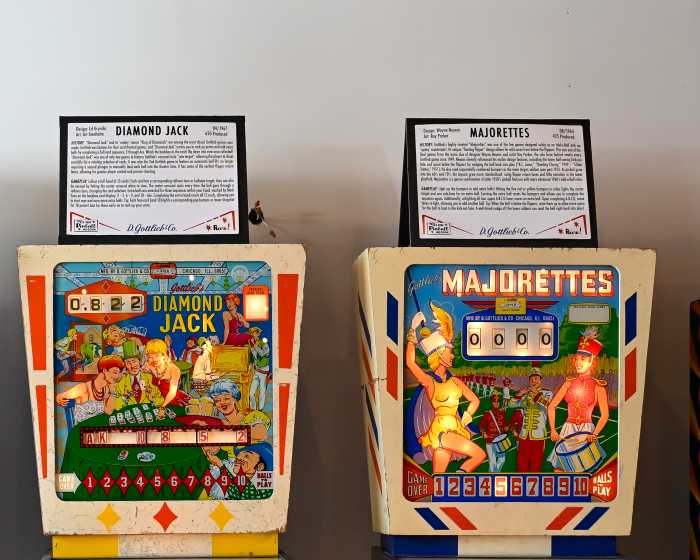
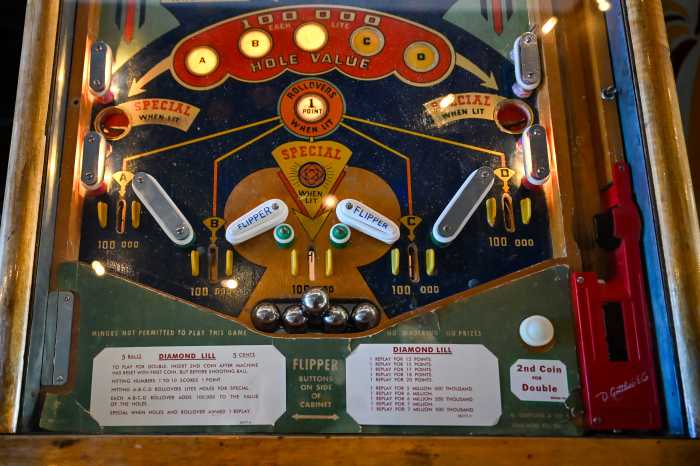
Then, he saved up enough money from his coffee shop job and bought his own pinball machine, from Craigslist for $800. Already a few decades old, the game was a little worse for wear.
“My friend’s dad is an electrician … he came over, he gave me a soldering iron and showed me how to repair stuff,” Murray said. “I didn’t do a ton of work on that, but I did a few things, poked around and adjusted to make things more sensitive.”
Across the country, Michalski’s aunt and uncle had a mostly-functional pinball machine in their house.
“Every third time I would go there it was working and operational,” he said. “Every time I’d go, I would ask my mom before, ‘Is the pinball working? Is the pinball working?’”
And when Michalski visited the VFW with his dad, he would always play another arcade game, Ball Bowler, a miniature, coin-operated bowling lane.
“I feel like I was always just really into playing arcade coin-op games in general,” he said. “I asked for a pinball machine for my birthday, which, of course, you’re never gonna get as a 5-year-old kid.”
(Michalski’s parents did, he said, buy him a miniature electronic pinball game that he loved.)
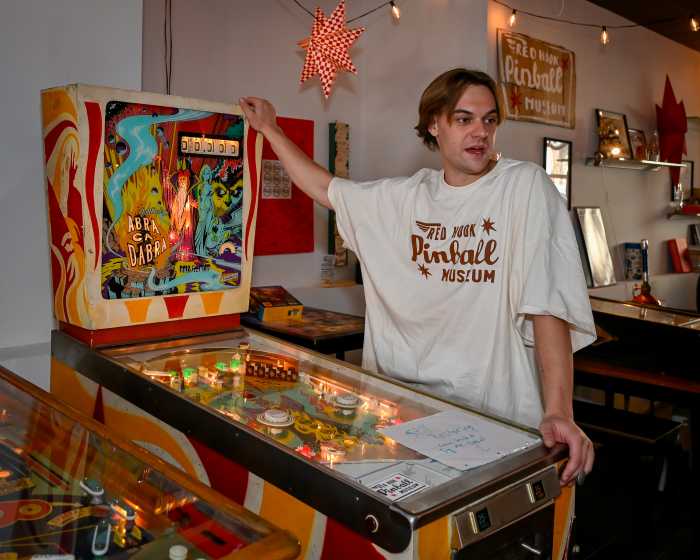
Michalski and Murray met in 2021 and quickly discovered their mutual love for pinball — specifically, for vintage electromechanical pinball. They made a trip out to the Silverball Retro Arcade in New Jersey, one of few arcades with playable vintage pinball games.
Not long after, a well-known New York City pinball machine operator, who had games all over the city — including in the Red Hook bar Seaborne — passed away. His family took the games out of Seaborne, leaving some pinball-shaped holes in the neighborhood.
“That was the point where I was like, ‘Oh, I’m an adult now, I can buy things that I want. I have expendable money,’” Michalski laughed. “So then we were like, let’s get a pinball machine!”
Vintage pinball games aren’t common in New York City — or anywhere — and the ones that do exist are often worn-out and in poor condition.
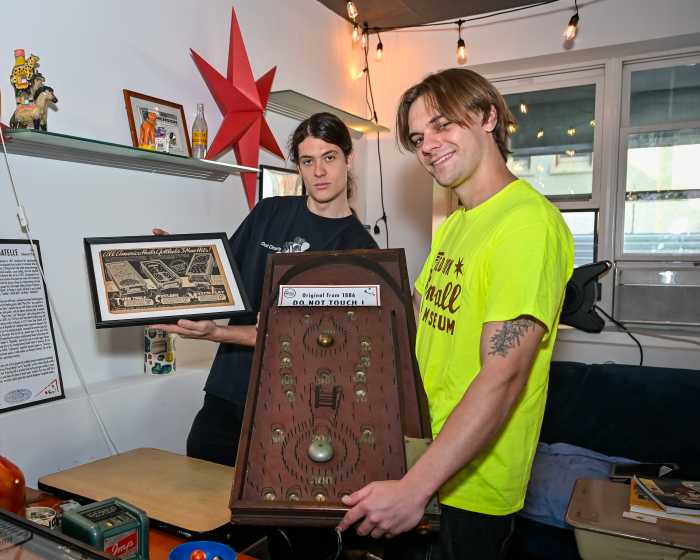
“It’s insane to publicly operate these things, no matter what,” Murray said. “They’re always slow, they’re always dirty.”
Before they were restored, the machines at the Red Hook Pinball Museum were no different.
“Most of these had well over 100,000 plays before we got them,” Murray said. “They were worn down, played so much.”
Now, they’re clean and functional after careful restoration. Murray and Michalski have fixed up broken electrical components, soldered together broken metal switches, and shelled out for real incandescent lights to replace the burned-out ones in the backboards.
“Diamond Lill was our biggest project, and that was probably, like, 300-400 hours of work to get that one up and running,” Michalski said. “Each of these is a minimum of 100 hours of work, but most of them fall in the 200-300 hour range.”
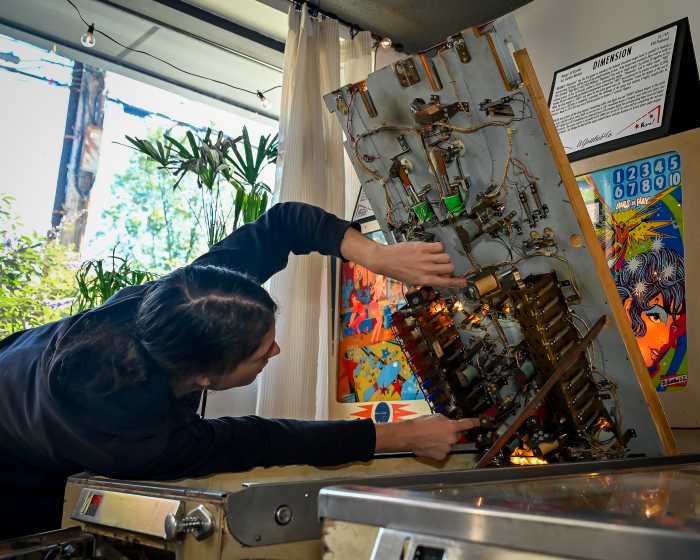
Their first few games — Majorettes from 1964, Diamond Jack from 1967, and Dimension and Bristol Hills, both from 1971 — lived in the back room at the bar, which became the first home of the Red Hook Pinball Museum.
The museum was an instant hit. They threw regular pinball tournaments and game nights in the bar, drawing large and enthusiastic crowds.
All the while, the two were carefully searching pinball message boards and Facebook Marketplace, hunting for more games.
Earlier this year, they hit the jackpot: two rare games for sale in Canada, including one of the first multi-ball pinball machines ever made. They knew they might never see one for sale again.
So, they woke up at the crack of dawn, rented a van, and drove 13 hours to Canada to pick them up. Games in hand, they turned right back around to return to New York.
After a quick stop at Niagara Falls — where they double-parked and ran out of the car one at a time to check out the roaring water — they drove through the night, broke for a two-hour nap, then moved the machines into their apartments and storage unit in time to return the van.
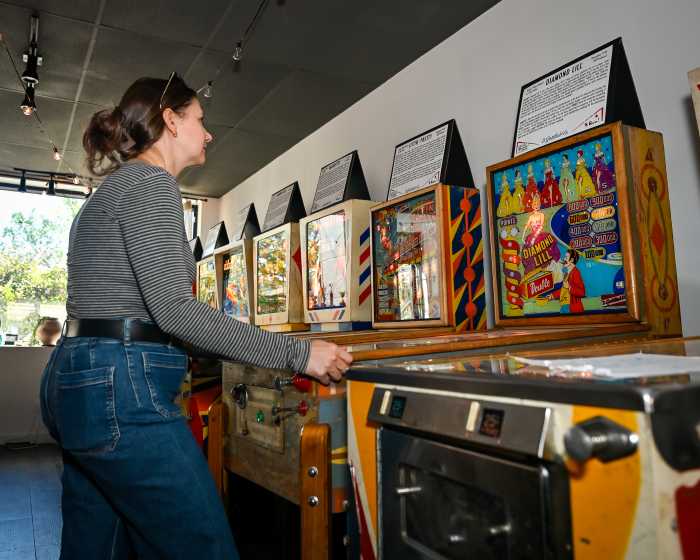
“It’s fun. It’s just like, [Kevin] had to be back for work, we had shit to do,” Michalski said. “We had to get this machine.”
After a few months, they outgrew the back room at the bar. In August, they had a two-week pop-up event a few blocks away, which culminated in a fundraiser.
“It did really well, so we said, we’re gonna risk it all and just try to do our own spot,” Michalski said.
They quickly found a vacant spot at 362 Van Brunt St., next door to The Record Shop, where Murray works part-time. The store’s owner, Bene Coopersmith, helped them find the location and negotiate the lease.
Once the lease was signed, it was a race to get ready for the grand opening, and the neighborhood stepped up to help out.
One artist who attended the pop-up, Jen Mussari, offered to make T-shirts to sell at the museum. Another, Emily Baldasarra, painted the sandwich board that points the way to the museum for free. The minifridge they keep stocked with seltzer was gifted by a neighbor, and they’re thinking about turning the museum into a nonprofit with the help of another local.
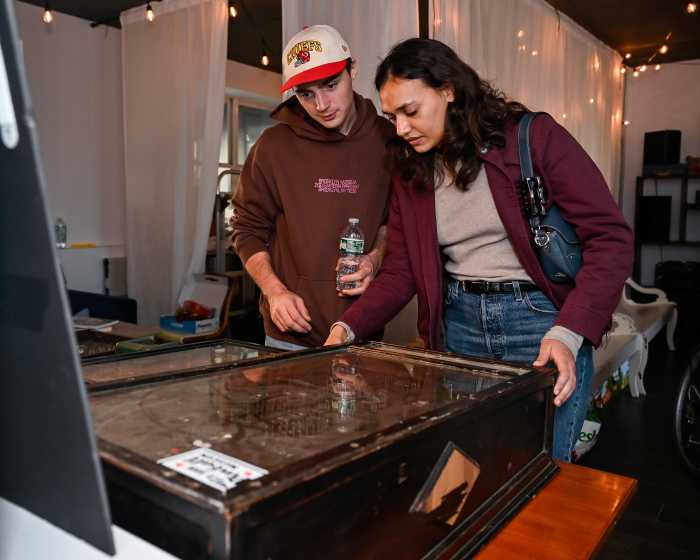
The grand opening was a hit, the pair said, and the museum has been busy ever since. On a sunny Friday afternoon, the first visitor wandered in an hour before it officially opened at 1 p.m., kicking off a steady stream of curious gamers.
“It’s really nice for us to see kids coming in and playing them, and families coming in with kids, because kids really love pinball but they’re only at bars,” Michalski said.
Though entry and gameplay is free, donations are encouraged. The museum is far from complete — Murray and Michalski have several more pinball machines being restored in their apartments and storage unit, and plan to buy some vintage table games for visitors who want to try something else out.
“We’ll always have new games coming through,” Murray said. “We’re always talking more events, we’re having a show here in November, our friend wants to start a chess club. We’ll definitely have more funny little community things going on.”


